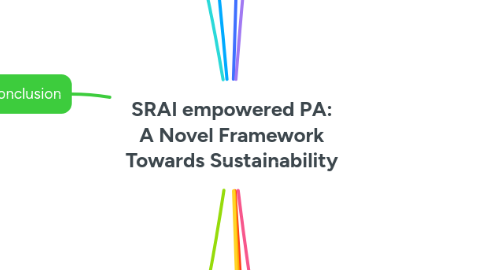
1. PA (People Analytics) Roles
1.1. PA as a Data-Driven Approach
1.2. PA in SRAI Implementation
1.3. PA for Ethical and Sustainable HR
2. Benefits SRAI empowered PA
2.1. Improved Decision-Making: Data-driven insights for informed HR decisions
2.2. Enhanced Talent Management: Strategic talent acquisition, development, and retention
2.3. Increased Employee Engagement: A more motivated and productive workforce
2.4. Promoted Social Responsibility: Alignment with ethical and societal values
2.5. Reduced Bias and Discrimination: Fair and equitable HR practices
3. Conclusion
3.1. Reiterate the significance of SRAI-Empowered PA
3.2. Emphasize the framework's potential to enhance sustainability and HR outcomes
3.3. Encourage further adoption and implementation of SRAI principles in PA practices
4. Discussion
4.1. Key Findings : Summarize the main points and contributions of research
4.2. Implication for Theory: Highlight the theory of SRAI Empowered PA framework
4.2.1. SRAI Theory
4.2.2. AI Theory
4.2.3. CSR Theory
4.3. Implication for Practice : Highlight the practical application of SRAI Empowered PA framework
4.4. Limitations & Future Directions : Acknowledge Limitations and Suggest Areas for further research
4.4.1. Limited Scope of Current Research
4.4.2. Evolving nature of SRAI and PA
4.4.3. Incomplete guidelines for SRAI Implementation
4.4.4. Future Research Areas
4.4.4.1. Stackholder Impact
4.4.4.2. Ethical Consideration
4.4.4.3. Social and Environment Impacts
4.4.4.4. Generative AI
5. Background (Need For SRAI in HRD)
5.1. Challenges of Implementation in HRD
5.2. Ethical and Social Implication of AI in HRD
5.3. The Role of SRAI in Addressing these Concerns
5.4. Need for a Novel Framework
6. SRAI Empowered PA (Figure 1)
6.1. Subjects
6.1.1. Primary Stakeholders
6.1.1.1. Stakeholders, governance and managers (Decission-makers;Monitors)
6.1.1.2. Employees (AI Designer; Developers; AI-Enabled PA Implementers; Monitors)
6.1.1.3. Customers (End Users); Suppliers (AI Developers; Solution Providers; Collaborators)
6.1.2. Secondary Stakeholders
6.1.2.1. Community
6.1.2.2. Environment
6.1.2.3. Government
6.1.2.4. Media
6.1.2.5. NGOs
6.1.2.6. Country
6.2. Objectives
6.2.1. Economic
6.2.2. Legal
6.2.3. Ethical
6.2.3.1. Fairness, Equality and non discrimination
6.2.3.2. Respect for Human Rights, human agency and autonomy
6.2.3.3. Transparency and explainability
6.2.3.4. Safety and protection from harm
6.2.4. Philanthropic
6.2.5. Environmental
6.3. Causes
6.3.1. Data Phase
6.3.1.1. Data Accessbility and representation
6.3.1.2. Data Bias and MisInformation
6.3.1.3. Data Privacy
6.3.1.4. Data Security
6.3.2. Modelling Phase
6.3.2.1. Measuring Errors
6.3.2.2. Algorithmic Bias
6.3.2.3. Black-box AI Problem
6.3.3. Application and Decision Phase
6.3.3.1. Corelation vs. Causation
6.3.3.2. Human Agency
6.3.3.3. Malicious AI (Bad AI Actor)
6.3.4. Implication Phase
6.3.4.1. Economic and Business outcome evaluation
6.3.4.2. Social and Enviromental evaluation
6.4. Means
6.4.1. Technical
6.4.1.1. Data Processing
6.4.1.2. Cyber Security
6.4.1.3. XAI
6.4.1.4. Post-Hoc Exam
6.4.2. Non Technical
6.4.2.1. AI Governance and Management
6.4.2.2. Legislation
6.4.2.3. Education
7. SRAI Framework (Figure 2)
7.1. Sustainability
7.1.1. Economic
7.1.2. Legal
7.1.3. Ethical
7.1.4. Philanthropic
7.1.5. Enviromental
7.2. Stackholders and Impacts
7.2.1. SRAI Consideration & Requirements
7.2.1.1. Profit
7.2.1.2. People
7.2.1.3. Planet
7.3. Returns & Sustainable Development
7.3.1. SRAI-Inclucive Concept
7.3.1.1. Robust AI
7.3.1.2. Lawfull AI
7.3.1.3. Ethical AI
7.3.1.4. Human Centered AI
7.3.1.5. Sustainable AI
8. Literature Concept (SRAI Empowered PA) (Table 1) 75 Journals Related
8.1. AI Enabled PA
8.1.1. People Analytics and AI
8.1.2. Analytics and AI
8.2. SRAI
8.2.1. AI And Corporate Social Responsibiility
8.2.2. AI And Environmental, Social and Governance
8.2.3. AI And Suistainable Development Goals
9. Adressing SRAI Considerations from Stakeholder Perspective (Table 2)
9.1. Subjects (Stakeholders)
9.2. Objectives (SRAI Considerations in PA)
9.3. Causes (Impedements)
9.4. Solutions (Means)
9.5. Alligned Sustainable Development Goals (Sustainability Outcomes)
10. SRAI Considerations and Recommendations for Selected HRD Activities (Table 3)
10.1. SRAI Considerations
10.1.1. Economic Level
10.1.2. Legal Level
10.1.3. Ethical Level
10.1.4. Philanthropic Level
10.1.5. Environmental Level
10.2. AI-Enabled in HRD Activities
10.2.1. Career Developmend (CD)
10.2.1.1. Career Planning
10.2.1.2. Employee Wellbeing
10.2.2. Organization Development (OD)
10.2.2.1. Performance and Change Management
10.2.2.2. Employee Engagement
10.2.2.3. Workforce Planning
